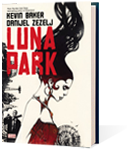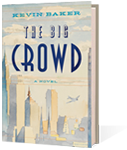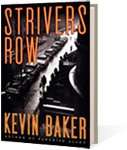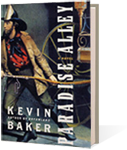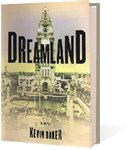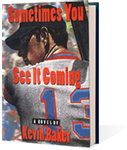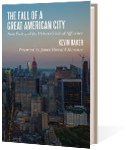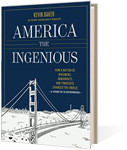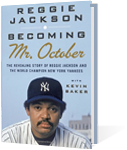The nonsense piles up so quickly in this silliest of all political silly seasons that it’s hard to keep up with it. Nonetheless, Ted Cruz’s assertion, in the last Republican debate and again in a television ad this week, that Donald J. Trump embodies “New York values” was a little startling.
From Cruz’s comment sprung a lively debate about what “New York” really stands for. The Texas senator had a ready answer: “socially liberal, pro-gay marriage, pro-abortion, focused on money and the media.” Trump, in what was undoubtedly his campaign’s finest (and maybe its only good) moment, shot back citing the city’s resilience following the 9/11 attacks. That came as a relief to those us of a certain age, for whom such a use of “New York” has long meant one thing: “Jew.” “The failure to get behind New York is anti-Semitism,” Woody Allen’s character famously said to a disbelieving Tony Roberts in Annie Hall. Fortunately, that thinking seems to be behind us now (though the way this year’s Republicans keep accusing each other of working “with Chuck Schumer of New York” as if they were signing a pact with Satan has made me wonder). Instead, it seems, we’re just liberal, amoral money-grubbers.
The truly interesting thing is not just that Americans have long suspected or hated their nation’s greatest city. The same can be said for many countries and their biggest metropolises the world over. It’s what America has most feared about itself — that, much as we continue to scorn the supposed depravity of this town, it continues to seduce us.
The city’s inhabitants have been suspiciously talented at commerce since the Dutch founded New Amsterdam. The great international capitalists of the 17th century made the colony a vital cog in their global trading empire, and from the start, New Amsterdam’s mix of nationalities and religions — by the 1650s, there were at least 18 languages spoken on the streets of Manhattan — was viewed with suspicion. Most other colonists at the time, including the Puritans in New England and the French in Canada, organized themselves around a single nationality or faith; to them, multiculturalism invited betrayal. New Amsterdam’s own governor, Peter Stuyvesant, shared this opinion: He once proclaimed a “Day of Prayer” to help his subjects repent from the “sin” of religious tolerance, and fretted that “the scrapings of all sorts of nationalities [had not] the least interest in the welfare and maintenance of the commonwealth.”
His wish to homogenize the colony was not to be. In 1663, the ruling Dutch West India Company forced Stuyvesant to end all religious persecution and accept the “free and unshackled” worship of Catholics, Baptists, Quakers and even Jews fleeing the Inquisition in Brazil. When the English displaced the Dutch in 1664, the motley inhabitants of what is now New York surrendered without a shot being fired, and went right back to work under a new name and a new flag. The other European settlers around the continent — most of whom waged bloody wars against each other, and Native Americans — must have looked on with contempt.
That contempt only grew after independence, when the city became the first capital of the new United States, and their representatives had to actually live here. John Adams found there to be “very little good breeding” in the city, and complained that New Yorkers “talk very loud, very fast, and altogether. If they ask you a question, before you can utter three words of your answer, they will break upon you again, and talk away.” Thomas Jefferson, his political nemesis, thought even less of the city, averring, “New York, like London, seems to be a cloacina”— toilet —“of all the depravities of human nature.” Much as he disliked Alexander Hamilton’s plan to consolidate the debts of the individual states in the federal government, Jefferson agreed to it, on the condition the U.S. capital be moved far from New York’s pernicious influence.
Once this was accomplished, aspiring national politicians mostly visited New York for the same reasons they do today — and the same “values” Cruz claims to despise: money and media. (We will not be so petty here as to mention Cruz’s own lucrative fundraisers in Manhattan, or those pesky Goldman Sachs loans.)
It was the media that Abraham Lincoln, contemplating a run for president in 1860, sought in his legendary address at Cooper Union. (“If he had not come to New York, or if his speech there had been a failure, the Lincoln of history would not have existed,” historian James McPherson wrote.) William Cullen Bryant and Horace Greeley, the leading literary lights of the city, brought out 1,500 people from the cream of New York society to hear Lincoln urge, “Let us have faith that right makes might.” Afterward, he rode a streetcar alone, down to the offices of Greeley’s New YorkTribune, to see to it that his words were transcribed accurately into print, as historian John Strausbaugh writes in the forthcoming City of Sedition. The speech — published in pamphlet form, along with a photograph Lincoln had taken at Mathew Brady’s studio on the same trip — made invaluable campaign literature, his mesmerizing words and his riveting, frontier visage distributed all over the nation.
But Lincoln would soon learn just how pronounced was the distance between the average New Yorker and the average American: He lost the city, by wide margins, in both general elections in which he ran, and 12 of its 17 daily papers endorsed his opponents in 1860. New York was by then an overwhelmingly Democratic town, thanks in good part to its immigrant, Irish-Catholic masses. It was not just implacably opposed to Lincoln’s Republican Party — which had founded in part by Protestant, anti-immigrant nativists — but was seen by much of the rest of the country as perverse, amoral and at odds with national values. Confederates thought New York financiers, who generally backed Lincoln, would never stand with the Union if it came to giving up all the money they were owed by the South, and the city’s rascally mayor, Fernando Wood, seriously proposed that if the South did secede, then Manhattan, Long Island and Staten Island should, too, thus forming the “Free City of Tri-Insula.” (The idea remains widely popular in New York today, save for the taking along Staten Island part.)
Most of the money men stuck with the Union once the Civil War broke out, but that didn’t stop them from speculating ruthlessly every day on Wall Street, mostly by trading heavily in gold. Irritated by a practice that undermined the nation’s whole financial structure, President Lincoln officially banned gold trading, wishing that every speculator “had his devilish head shot off!” But the traders largely ignored him, and so-called dead horse contractors, “the sybarites of shoddy,” jammed the city’s hotels, making fortunes off selling their country’s army defective rifles, glued-together uniforms that came apart in the rain (a Brooks Brothers specialty) and, well, dead or dying horses. It didn’t help the city’s image that, when a military draft was instituted, many rich New Yorkers bought their way out of it, helping set off the terrible “draft riots” by those alien Irish-Catholic hordes, an insurrection that almost sunk the Union just days after Gettysburg. The draft riots left an indelible stain on the city, especially in the eyes of many leading Republican politicians and newspaper publishers, and for decades after the war, they would continue to castigate New York, the Irish in particular, as the city of “rum, Romanism, and rebellion.”
By the turn of the century, New York’s political image began to take a beating from all ideological vantage points. In his famous “Cross of Gold” speech in 1896, the populist crusader William Jennings Bryan scoffed that “the great cities are in favor of the gold standard,” and urged Americans, “Burn down your cities and leave our farms and your cities will spring up again as magic.” Everyone knew what city in particular he had in mind: New York, where every harvest-time, Wall Street squeezed the nation’s farmers until the pips squeaked. James Weldon Johnson, in his seminal 1912 novel, The Autobiography of an Ex-Colored Man, castigated the false promises of freedom offered to black Americans by New York, which he described as “sit[ting] like a great witch at the gate of the country.” Leon Trotsky, living here in exile, thought New York a city “of capitalist automatism, its streets a triumph of cubism, its moral philosophy that of the dollar.” (New Yorkers could never understand why he gave up a perfectly nice apartment in the Bronx for the Russian Revolution.)
The curious thing was, the more Americans professed to hate New York, the more they were enticed by it. By the 1920s, America had slammed shut the “golden door” of immigration that had done so much to give the city its unnerving, alien character, and banned the saloons that provided its legendary boisterousness. But America’s native sons and daughters continued to flock to the metropolis — at a rate of 2,000 a week. F. Scott Fitzgerald, the city’s poet laureate in the Jazz Age, often seemed as repelled as he was intrigued by New York’s murky lures and temptations. In The Great Gatsby, his narrator, Nick Carraway, witnesses such fantastic, discombobulating sights as a black couple being driven in a car by a white chauffeur, and a liberated woman cheating at golf; meets a Jewish gangster who fixed the World Series; even, it seems, sleeps with another man after a drunken party. In the end, Nick flees this corrupted, Eastern outpost for “the dark fields of the republic” — that is, Middle America, then largely under the thrall of the Ku Klux Klan.
It could have served as a metaphor for the political passions of the decade, all of which exploded in 1924 at the Democrats’ record 103-ballot, 15-day presidential convention in Madison Square Garden — a clash precisely between the politics of New York and the rest of the country. The party split over a motion to condemn the Klan, which in its 1920s incarnation felt even more threatened by the growing Catholic and Jewish immigrant populations of the big cities than it was by people of color. Many of the delegates of the leading presidential contender, Georgia’s William McAdoo, were Klansmen and joined an immense “Klanbake” in New Jersey during the convention. McAdoo, who was himself a more sophisticated figure in need of the Klan’s support politically, had come to the wrong town. His leading rival, New York Governor Al Smith, packed the galleries with his Tammany braves, who kept up an infernal din. Insults flew back and forth, and fistfights broke out on the convention floor, as each side claimed to be the true protector of “Americanism.”
Neither candidate received the nomination in the end, but when Smith won it four years later, the full fury of rural, Protestant America was vented upon him. Smith had been an outstanding governor for eight years, an honest, dedicated, visionary public official, but his nomination at the time was considered as unsettling as nominating, say, a hip-hop star might be today. He was not only a Roman Catholic, but an unabashed product of New York’s streets and its political culture, a native of the Lower East Side who lacked a high-school diploma, spoke with the inflections and accent of his city, and wore the suits and brown derby of a city slicker. He was “socially liberal” for his time, a man who, in Prohibition America, enjoyed having a beer and singing songs in a saloon and who had friends of all sorts, including Jews and financial titans on Wall Street. No Democrat was going to beat Herbert Hoover in 1928, but Smith was cruelly humiliated for who he was and where he came from. Crosses were burned as his train passed through rural regions, and Protestant fundamentalists claimed his election would bring the pope to power in the United States. Smith’s shy, somewhat frumpy wife was savagely ridiculed. Much of the formerly solid, Democratic South broke away, and Smith even lost New York in a landslide that left him permanently embittered.
In the decades that followed, the open hatred for New York abated, as the city’s power was somewhat constrained. The New Deal reforms of the Depression transferred much of Wall Street’s power to Washington, and New York’s financial titans were publicly humbled. In the wake of World War II, the polyglot character of America — and thereby, of New York — was widely celebrated for the first time. With the advent of unprecedented prosperity, all around the nation, politicians and voters alike largely stopped blaming New York for their problems.
But New York hating would return with a vengeance during the social turmoil — and the rise of the American right — beginning in the 1960s. When Barry Goldwater remarked (repeatedly) that he would like to saw off the East Coast and let it float out to sea, he wasn’t talking about Delaware. New York’s near bankruptcy in 1975 unleashed a tidal wave ofschadenfreude. Haughtily refusing to give the city “a bailout,” President Gerald Ford called its mismanagement “unique among municipalities in the United States,” while his chief of staff, a young Donald Rumsfeld, plotted with Richard Daley I to let the city default and snatch its financial center away to Chicago. Rumsfeld’s assistant, a young Dick Cheney (oh, was Dick Cheney ever really young?) imposed tuition on City College of New York, traditionally the university of poor immigrants, for the first time, among other gratuitous penalties.
Again and again, New York’s problems were cast in the most moralistic of terms, with Republican politicians using words like “irresponsible” and “accountability.” Binghamton’s Warren Anderson, the Republican head of the state Senate, graciously compared helping the city to giving heroin to an addict. William Simon, Ford’s secretary of the treasury, would later sneer in print, “American taxpayers could not be drained to fill New York’s bottomless pit” — conveniently ignoring the fact that throughout the fiscal crisis, New Yorkers continued to pay out billions more in state and federal taxes than their city took in. Ford, looking ahead to a primary campaign against Ronald Reagan, condemned New York’s “liberal values,” one after another, in his infamous, “Ford to City: Drop Dead” speech. “High wages and pensions,” he said, “its tuition-free university system, its city-run hospital system and welfare administration” — all of this public largesse had set the city up for its “day of reckoning.”
The city would react to Ford’s insults by costing him a close election, and move on.
What New York then became was, in yet another irony, what so many of its stern Republican inquisitors supposedly wanted back in 1975: a sleek, Darwinian animal uniquely suited to flourish in the globalized world. Electing hard-bitten, conservative prosecutors and billionaire businessmen as mayors, attracting ruthless capitalists from all over the world; its economy booming and its crime rate plunging even as the rest of the country sinks into runaway drug addiction and props itself up with casinos and megalotteries. Cruz, like old peg-legged Peter Stuyvesant, might still want to hold a day of repentance for religious tolerance, and New York still remains incorrigibly open-minded when it comes to things like gay marriage. But its abortion rate recently reached a new low since the procedure was legalized in 1973, and its rates of crime, divorce, illegitimate births, pornography and drug use are probably lower than in some districts that most fervently support Cruz these days.
In many ways, New York is back where it started: a sparkling, tolerant, polyglot outpost of global empire, still surrounded by braying puritans telling us how we are doing it all wrong. Yet it has also become more and more like the rest of America —and usually not for the better. Corner delis and bakeries have been replaced by 7-11s, Walgreens, Starbucks and Subways. Our movie palaces have been replaced by multiplexes; our new skyscrapers the same, Trumpian glass towers that can be found in any city, our famous stores and our citadels of finance slowly giving way to online shopping and day trading. It makes one want to ask Mr. Cruz: Is our real crime those liberal social values? Or have we just lost the ability to seduce?

